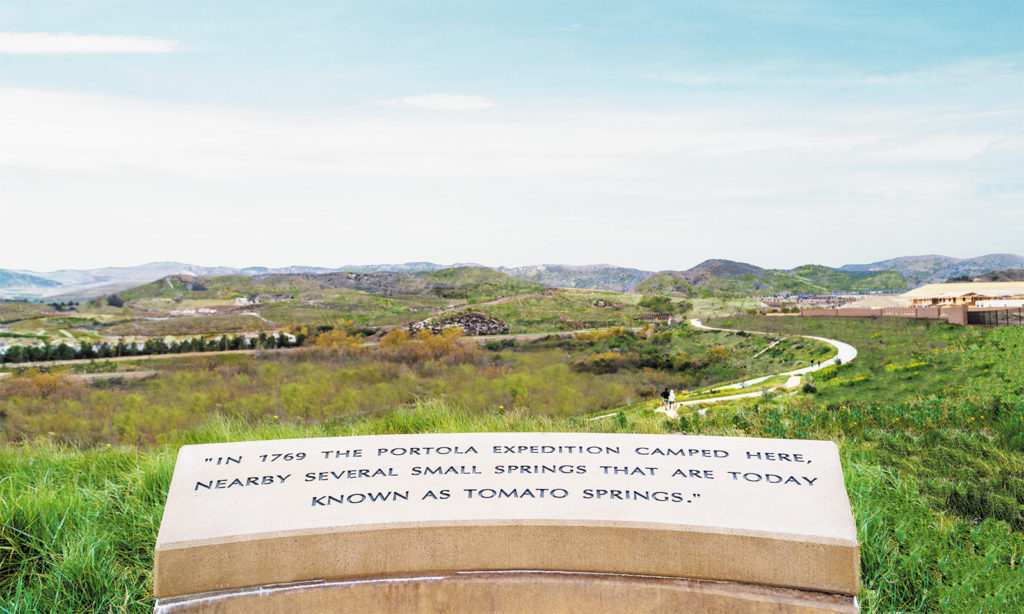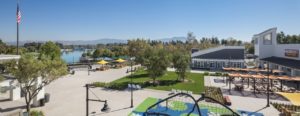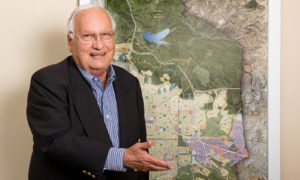 A short walk from Portola Springs Community Park brings you to a little-known historical site in Orange County.
A short walk from Portola Springs Community Park brings you to a little-known historical site in Orange County.
A path wraps around a small hill leading to a monument bearing the name: Gaspar de Portolà.
It marks the spot where Portolà, the first European explorer of California, camped in 1769.
This month marks the 250th anniversary of that expedition. Portolà’s expedition
By 1769, the Spanish were eager to establish a series of missions along the California coast.
That May, by order of the King of Spain, Capt. Portolà led an expedition of 63 soldiers and 100 pack mules from Mexico to Monterey Bay to scout possible locations.

On July 26, according to an expedition journal, they climbed into the hills of what is now Irvine. It was there that Father Francisco Gomez spotted something that would halt them for the night – two small springs to supply the men and mules with water.
The grateful soldiers called the camp El Aguage del Padre Gomez, or Springs of Father Gomez. Later they became known as Tomato Springs because of the wild tomatoes that grew nearby.
Today, Portolà’s campsite features a plaque for the explorer whose name lives on at Portola High School, Portola Parkway, and Portola Springs Community Park.
NAMES AS OLD AS THE HILLS
Many Orange County landmarks take their names from Portolà’s expedition of 1769, including these:
-
- Ortega Highway: Named for Portolà’s chief scout, Sgt. Jose Francisco Ortega.
-
- Trabuco Creek: Named because one of Portolà’s scouts lost his musket, called a trabuco, there.
-
- Portola Springs: Named after expedition leader Gaspar de Portolà.
-
- Santa Ana River: Named by Portolà’s men in honor of St. Anne, whose feast they had celebrated just before crossing.
- Tomato Springs: Originally named the Spring of Father Gomez, after the priest in Portolà’s expedition who discovered them, and later named Tomato Springs for the wild tomatoes that grew nearby.









